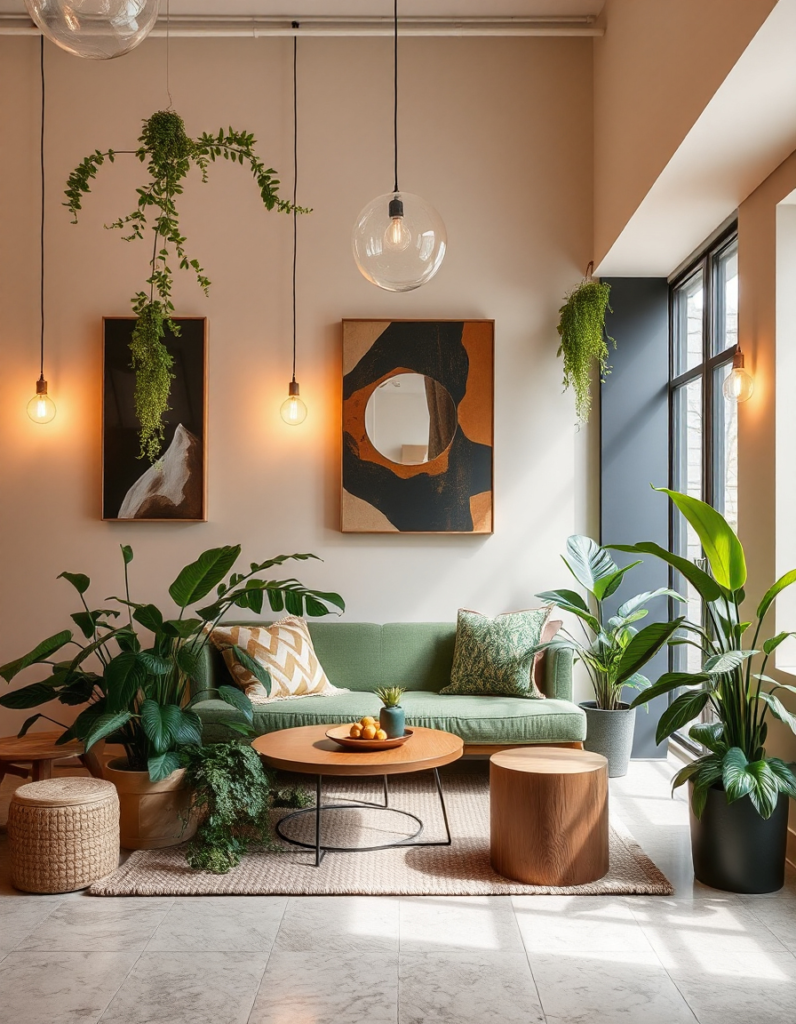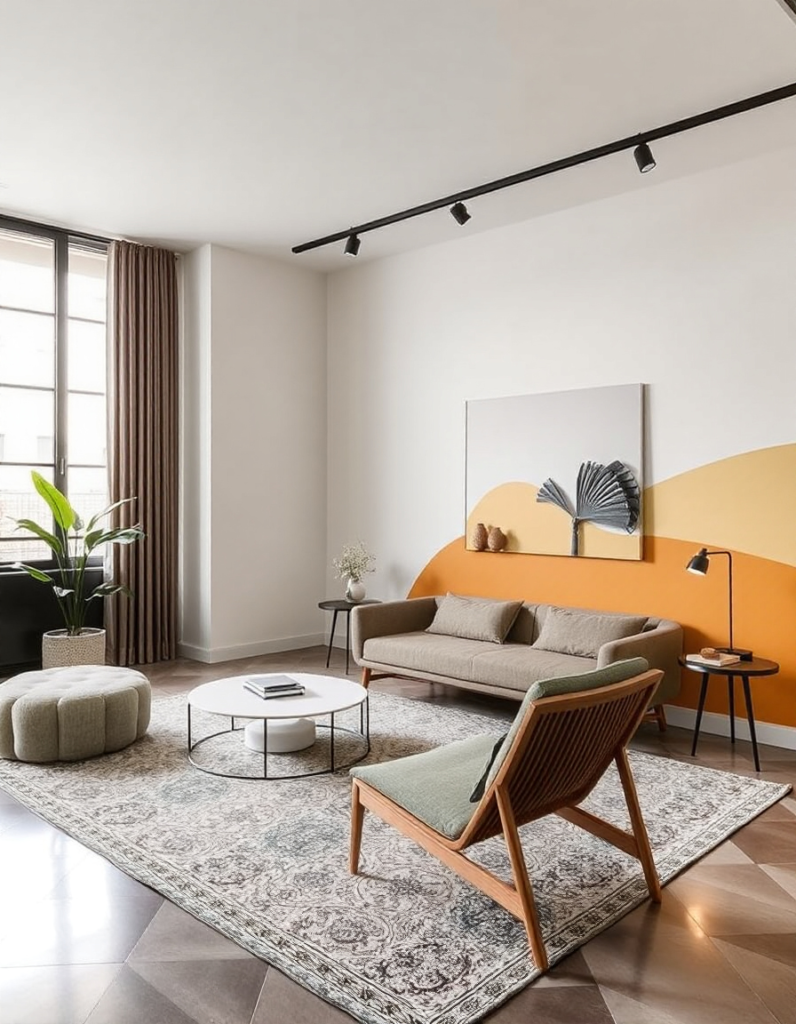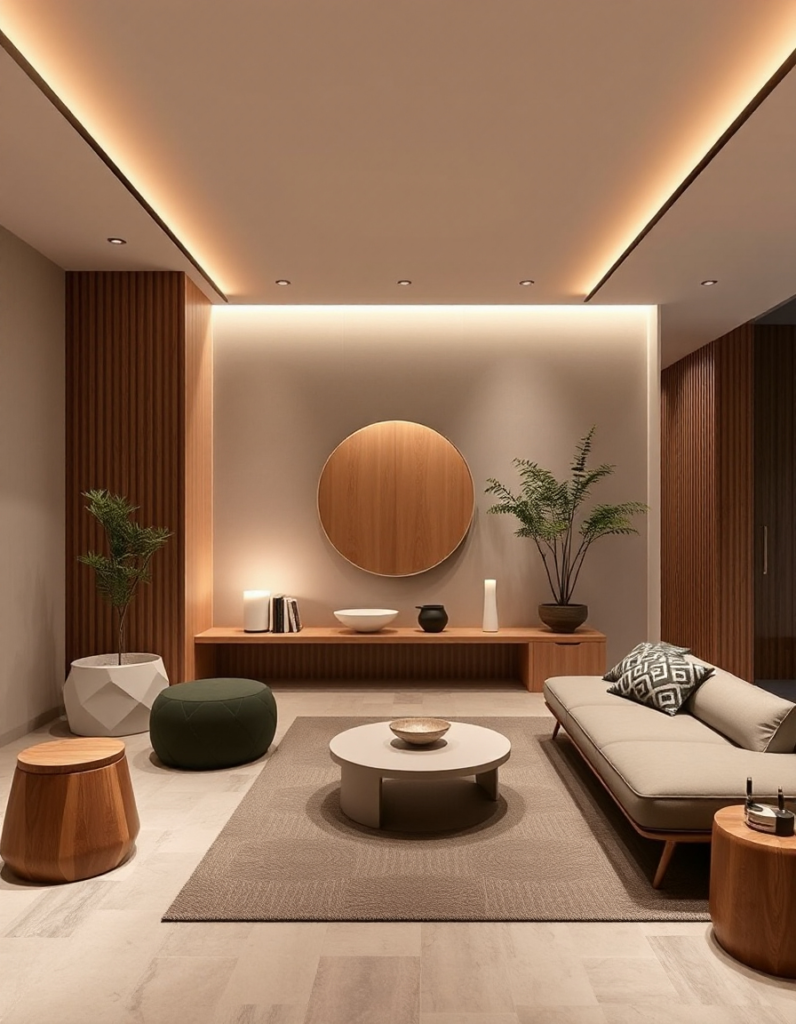Milan Design Week is one of the most influential design events in the world. It serves as a melting pot of innovative ideas, cutting-edge designs, and global creativity. Every year, the event showcases the latest trends in furniture, interior design, and architecture. As 2025 approaches, Milan promises to unveil groundbreaking concepts that will influence the design world for years to come.
For Indian interior designers, Milan Design Week presents a unique opportunity to gain fresh insights and inspiration from Europe’s best. But the question arises: What exactly can Indian interior designers take away from Milan’s design extravaganza?
This blog post delves into the trends, concepts, and innovations of Milan Design Week 2025, exploring how Indian designers can incorporate European design elements to elevate their projects. Let’s dive into the key takeaways that Indian designers should consider as they look to the future of interior design.
🏛️ 1. Sustainability as the Core Principle
Europe’s Leading Focus on Sustainable Design
Sustainability has been at the forefront of design in recent years, but Milan Design Week 2025 is set to emphasize this even more. Europe, particularly Italy, is known for its commitment to environmental responsibility in design. Italian designers are pioneering sustainable practices, integrating eco-friendly materials, and focusing on circular design to minimize waste.
Indian Interior Designers Can Steal:
● Eco-friendly Materials: Europe’s design leaders are making use of sustainable materials such as recycled metals, wood from responsibly managed forests, and natural fibers like hemp and flax. Indian designers can adopt these materials to add eco-conscious elements to their designs.
● Upcycling and Circular Design: Milan 2025 will showcase a range of upcycled furniture and decor. Incorporating upcycling into interior design is a cost-effective and sustainable solution that Indian designers can embrace in both residential and commercial spaces.
● Biophilic Design: Nature-inspired interiors that connect people with their environment will be a dominant theme at Milan Design Week 2025. Indian interior designers should incorporate plants, natural light, and greenery into their projects to promote well-being and create a calming atmosphere.

🖼️ 2. Craftsmanship and Artisanal Excellence
Celebrating Craftsmanship
European design often emphasizes the craftsmanship behind every piece of furniture and decoration. Milan Design Week 2025 will highlight how traditional craftsmanship is being seamlessly combined with modern technology to create timeless designs. The rich Italian history of artisanal work is being carried forward through collaborations with skilled artisans who produce bespoke pieces.
Indian Interior Designers Can Steal:
● Reviving Indian Craftsmanship: While Milan celebrates European craftsmanship, Indian designers can draw inspiration from this by reviving traditional Indian craft techniques like block printing, handweaving, and lacquer work. Blending these techniques with contemporary design can create a unique fusion style.
● High-Quality Materials: Embrace materials like Indian marble, teak wood, and brass in their raw, organic forms. Just as Milan is celebrating high-quality European materials, Indian designers can proudly showcase locally sourced, high-quality materials in their designs.
🎨 3. Bold Colors and Patterns
The Power of Color and Pattern
Europe is not afraid to experiment with bold colors and intricate patterns in its interior design. Milan Design Week 2025 is expected to feature vibrant palettes, with designers playing with contrasts, vibrant hues, and intricate patterns to create dramatic effects in interiors. This trend taps into emotion, drawing people into spaces that are not only functional but also visually engaging.
Indian Interior Designers Can Steal:
● Vibrant Color Schemes: India has a rich heritage of color, from the bright hues of Indian textiles to the striking colors seen in traditional crafts. Indian interior designers can take inspiration from Milan’s use of color to create vibrant, bold interiors that celebrate the eclectic diversity of Indian culture.
● Geometric and Organic Patterns: Milan Design Week 2025 will likely showcase intricate geometric patterns, abstract motifs, and organic forms. Indian designers can experiment with these patterns while integrating traditional motifs, such as paisleys, mandalas, or Jaipur block prints, for a unique fusion of styles.

🏡 4. Multifunctional Spaces
Designing for Adaptability
In Europe, the trend of multifunctional spaces is gaining traction, especially as people seek to optimize their living and working environments. In 2025, Milan will feature designs that emphasize how interior spaces can be adapted for various needs. Whether it’s transformable furniture, modular designs, or space-saving solutions, the emphasis will be on flexibility.
Indian Interior Designers Can Steal:
● Modular Furniture: With space constraints in Indian cities, designers can incorporate modular and flexible furniture solutions, similar to those seen in Milan. Murphy beds, expandable dining tables, and modular storage units can be integrated into both residential and commercial spaces to maximize functionality.
● Flexible Room Layouts: Embrace the idea of open-plan living and flexible workspaces where walls can be moved or adjusted to create different areas as needed. This adaptability aligns with the needs of modern families and businesses in urban India.

🌱 5. Integration of Smart Technology
Technology Meets Design
Smart technology continues to redefine the way we live and work, and Milan Design Week 2025 will undoubtedly showcase the intersection of technology and design. From smart lighting systems to automated furniture, technology is being integrated into interiors to enhance both functionality and comfort.
Indian Interior Designers Can Steal:
● Smart Lighting Solutions: Indian designers can integrate intelligent lighting systems that adjust according to the time of day or mood, creating ambient atmospheres that cater to various activities like reading, relaxing, or working.
● Automated Furniture: Furniture pieces that are adjustable and multifunctional are becoming more popular in European design. Indian designers can incorporate these solutions into their projects, particularly in compact urban spaces where efficiency is key.
● Home Automation: The rise of home automation in Europe is a trend Indian designers can leverage. From smart thermostats to voice-activated controls, integrating these technologies into interior design can elevate user experience and convenience.
🧘 6. Wellness and Mindfulness in Interior Design
Designing for Well-being
The design of spaces that promote mental health and well-being is a significant trend at Milan Design Week 2025. Whether it’s through calming color schemes, biophilic design, or creating spaces that promote mindfulness, European designers are increasingly focused on creating environments that support emotional health.
Indian Interior Designers Can Steal:
● Mindful Spaces: Indian designers can adopt the practice of creating spaces for mindfulness within homes, workplaces, and wellness centers. This includes meditation zones, yoga rooms, and soundproof spaces that allow individuals to disconnect from stress.
● Wellness-Centered Design: Incorporating elements like air purifiers, ergonomic furniture, and wellness amenities into Indian interiors can improve the overall health and comfort of the users. The fusion of traditional Indian wellness practices, such as Ayurveda and yoga, with modern design trends will make spaces truly holistic.

🏆 7. Storytelling Through Design
Designs with Meaning
In Europe, design is becoming more than just aesthetics; it’s about telling stories and conveying messages through materials, forms, and details. Milan Design Week 2025 will feature installations and products that invite viewers to connect on an emotional level by telling a story or evoking a personal connection.
Indian Interior Designers Can Steal:
● Storytelling through Art and Decor: Indian designers can integrate elements that tell local stories or heritage narratives into their projects. For example, a wall made from handcrafted tiles that depicts a local myth or the use of Indian fabrics that reflect historical textiles can evoke deeper connections to the environment.
● Personalization and Heritage: Incorporating personalized design elements, like custom-made furnishings or locally inspired art pieces, allows for a deeper narrative that resonates with the user’s identity and roots.

💭 Conclusion: Bridging Cultures with Design
Milan Design Week 2025 will offer countless insights and inspirations for Indian interior designers who are looking to enhance their design vocabulary. The key takeaways from Europe are not just about adopting trends, but about infusing meaning, innovation, and sustainability into every design decision.
As Indian designers continue to blend tradition with modernity, global inspiration like Milan Design Week provides the perfect opportunity to explore cross-cultural exchange and take Indian design to the next level. By adapting European design trends while maintaining a deep respect for local culture and craftsmanship, Indian interior designers can create unique, timeless spaces that speak to both function and emotion.
If you’re looking to enhance your interiors with global design trends, feel free to reach out for a consultation.
📞 Contact: +91 94675 99688
📩 Email: contact@mishulgupta.com
🌐 Website: www.mishulgupta.com
